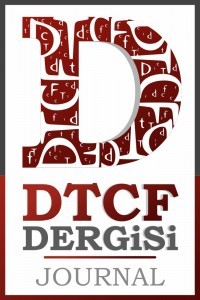İstanbul-Ankara Arasında Romanya: Kemalist Cumhuriyetin İlk On Yılında İttifakın Başlangıcı
Kemalist bölgesel politikanın tasarımında öncelikli ilkelerden birisi Güneydoğu Avrupa’da uzlaşma ve işbirliği olmuştur. Böylece, Atatürk’ün “Türkiye, gücün ve uluslararası barışın bir öğesidir” konseptini benimseyen Türkiye, dünya savaşları arasındaki dönemde bir bölgesel güç olarak ortaya çıkmıştır. Ankara ve Bükreş, geçmişteki ilişkilerini değerlendirdikten sonra geleceğe yönelik politikalar yürütmüştür. Romenlerin 1927-1928 yıllarında aldığı bazı kararlar ikili ilişkileri ve bölgesel çıkarları göz önünde bulundurarak esnekliliği sağlamıştır. Başkentlerdeki durum, bu tabloyu Balkan Antantı’nın kuruluşundan 1934 önce sergiliyordu. Barış ve tarafsızlık konseptleri Romanya ve Türkiye için, 1941’e kadar dış politikanın ana ilkelerini oluşturmuştur.
Anahtar Kelimeler:
Romanya, Türkiye, İkili İlişkiler, Romanya Büyükelçiliği, Ankara
Romania Between Istanbul and Ankara: The Beginning of The Alliance in The First Decade of The Kemalist Republic
The premise that designed the Kemalist regional policy, has considered the reconciliation and cooperation between the South-Eastern Europe. The reasons, highly pragmatical, have contributed significantly to shaping an important regional power in the late interwar period, that promoted the concept formulated by Ataturk – “Turkey is an element of force and international peace.” After a mandatory review of the past and prospects of bilateral relations, a concept has been theorized in Ankara and Bucharest on a long term. The Romanians’ decisions have outlined some of the coordinates from the Romanian –Turkish relations from 1927-1928 that would promote bilateral and regional interests ensuring flexibility. Pictures are clearly marked in the two capitals, even before the Balkan Entente in 1934 built a strategic axis that should have been very active, functional and pragmatic. The concepts of peace and neutrality, promoted by Bucharest and Ankara would remain foreign policy dogmas until the general European War, in 1941, even with the risk of cancelling the alliances concluded during the two interwar periods.
Keywords:
Romania, Turkey, bilateral relations, Embassy of Romanya, Ankara,
___
- Unpublished archive documents
- The Archive of the Foreign Affairs Ministry (from now on, A.M.A.E), fond 71/1920- 1944 Grecia, vol.48.
- A.M.A.E., fond 71/1920-1944 Turcia, vol. 58.
- National Archives County Constanta, Constanţa Prefecture, dosar 1/1919.
- Published archive documents
- România- Turcia. Relaţii diplomatice, vol.I (1923- 1938). edition by Dumitru Preda. Bucureşti, 2011.
- ANGHEL, Florin. “Portrait Of A Necessary Ponto- Baltic Alliance: Polish Commercial Road Projects Towards The Balkans And The Black Sea, 1919- 1926.” Revista Română pentru Studii Baltice şi Nordice 2. 2 (2010): 175- 202.
- --. “Romanian-Polish Goals and Strategies in relation to the USSR and the Black Sea in the Inter-War Period.” Historical Yearbook, III (2006) : 91-98.
- ARGETOIANU, Constantin. Însemnări zilnice, vol. I (2 February 1935- 31 December 1936), edition by Stelian Neagoe, Bucureşti, 1998.
- CIACHIR, Nicolae. “Informaţii din arhivele româneşti despre Mustafa Kemal Atatürk.”Revista de istorie, 6 (1981): 121-135.
- CITIRIGĂ, Daniel. “Tronuri între strategii diplomatice şi interese poltice. Proiecte româno-bulgare de căsătorii dinastice.” Români şi bulgari. Provocările unei vecinătăţi. Ed. Florin Anghel, Mariana Cojoc, Magdalena Tiţă. Bucureşti, 2007.
- CITIRIGĂ, Daniel, Florin Anghel.“Fighting the Odds: Dynastic Projects of the Romanian Monarchy during the Interwar.” De las Monarquias autoritarias a la Democracia (siglos XIV- XX)/De la monarhia autoritară la democraţie (secolele XIV- XX). Ed. Porfirio Sanz Camanes, Jesus Garcia Molero. Târgovişte, 2009:171-190
- COJOCARU, Ionuţ. România şi Turcia actori importanţi în sistemul de relaţii interbelice (1918- 1940). Târgovişte, 2014.
- EKREM, Mustafa Ali. Relaţiile româno-turce între cele două războaie mondiale (1918-1944). Bucureşti, 1993.
- --. “Relaţiile româno-turce (1928-1934).” Revista de istorie 5 (1981): 883- 898.
- GAFENCU, Grigore. Ultimele zile ale Europei. O călătorie diplomatică întreprinsă în anul 1939. Bucureşti, 1992.
- GARLICKA, Anna. “Polska – Jugoslawia. 1918-1939.” Studia z dziejów Z.S.R.R. i Europy Środkowej XII (1976): 98-121.
- LEE, Arthur Gould. Regina Mamă Elena a României, Prinţesă de Grecia şi Danemarca. O biografie autorizată. Bucureşti, 2008.
- MOISIL, Grigore C. “Jurnal. Scrisori din Turcia.” edited by Viorica Moisil, Manuscriptum 85. 1 (1985): 135-144.
- OMER, Metin. “Romanya’da Çıkan Türk Bir Gazete: Türk Birliği.” Cumhuriyet Tarihi Araştırmaları Dergisi. 17 (2013): 171-186.
- PAKULA, Hannah. Ultima romantică. Viaţa Reginei Maria a României. Bucureşti, 2003.
- PAMUK, Orhan. Istanbul: amintirile şi oraşul. Iaşi, 2011.
- PLOPEANU, Emanuel. Politica Statelor Unite faţă de Turcia între anii 1943 şi 1952. De la neimplicare la alianţă, Iaşi, 2009.
- RACHIERU, Silvana. “A Social Perspective on the History of Modern Romanian Diplomacy: the Case of the Royal Legation of Romania to Istanbul.” Romanian and European Diplomacy. From Cabinet Diplomacy to the 21-st Century Challenges. Ed. Gh. Cliveti, Adrian- Bogdan Ceobanu, Adrian Vitalaru, Ionut Nistor. Trieste, Iaşi, 2012:125- 139.
- REGINA Maria a României, Însemnări zilnice (1 ianuarie- 31 decembrie 1923). vol. V. edition by Vasile Arimia. Bucureşti, 2006.
- RÎȘNOVEANU, Ion “Mutaţii geografice în Dobrogea interbelică.” Anuarul Muzeului Marinei Române X (2007):42-53.
- TITULESCU Nicolae.Documente diplomatice. Bucureşti, 1967.
- --. L’ordre dans la pensée. Bratislava, 1937.
- VANKU, Milan. Mica Înţelegere şi politica externă a Iugoslaviei, 1920- 1938. Bucureşti, 1979.
- --. Nicolae Titulescu, promotor al politicii de pace şi colaborare în Balcani, 1920-1936. Bucureşti, 1986.
- Yayın Aralığı: Yılda 2 Sayı
- Başlangıç: 1942
- Yayıncı: Ankara Üniversitesi
Sayıdaki Diğer Makaleler
Platon’un Protagoras’ında Haz Anlayışı Üzerine Bir İnceleme
T’ang Hanedanlığının Büyük Türk Generali Pu-Ku Huai-En
Hicaz’a Meşakkatli Yolculuk: Türkistanlı Hacılar, Halife ve İstanbul XVI-XX Yüzyıl
Mehmet ALPARGU, Serkan YAZICI, Fikrettin YAVUZ
Yontmataş Bulguları Işığında Yukarı Dicle Havzası’nda Yeni Bir Neolitik Yerleşim: Boncuklu Tarla
Metin KARTAL, Harun TAŞKIRAN, Kaan BULUT, Onur DİNÇ
Varlık Mâhiyet Öz ’den Önce mi Gelir? Varoluşçuluk ve İbn Sînâ
Psiko-Antropolojik Bir Olgu Olarak Fal Üzerine Nitel Bir Araştırma
William Blake’in “London” Adlı Şiiri: Güç ve Otoriteye Karşı Bir Direnç
İstanbul-Ankara Arasında Romanya: Kemalist Cumhuriyetin İlk On Yılında İttifakın Başlangıcı
